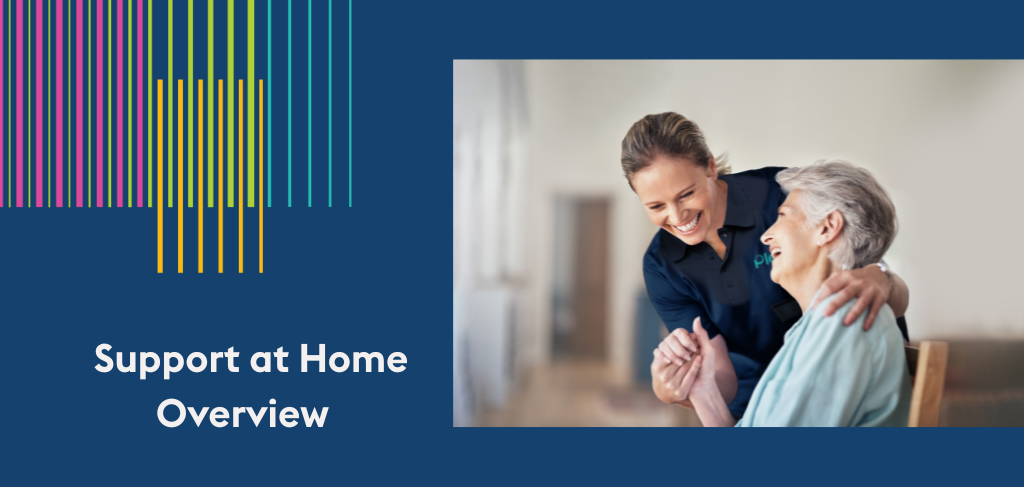Empowering Older Australians to Live Well and Independently
From 1 July 2025, the landscape of aged care in Australia is set to undergo a significant transformation with the launch of the Support at Home program. Designed to enhance in-home aged care services, this new program aims to provide older Australians with greater independence and more tailored care—allowing them to live safely and confidently in their own homes.
What’s Changing? A Major System Overhaul
The Support at Home program will replace the existing Home Care Packages (HCP) and Short-Term Restorative Care (STRC) programs. Then, from 1 July 2027, it is planned to also integrate the Commonwealth Home Support Programme (CHSP), which will continue to operate independently in the meantime for those with low-level care needs.
Here are some of the major reforms coming into effect:
-
Integration of Programs: A single, unified system combining HCP and STRC from 2025, and CHSP from 2027.
-
New Aged Care Act: A legislative foundation that prioritises person-centred care, safety, and accountability.
-
Price Caps (from 2026): Standardised costs to ensure fairness and transparency across the sector.
-
Personalised Support Plans: Care that’s tailored to individual needs and goals.
-
Enhanced Support for Complex Needs: Targeted services for those requiring more intensive clinical care.
-
Quarterly Budgets: Clearer budget management for consumers and providers.
-
Defined Service Lists: Structured categories of available services to streamline care planning.
-
Client Co-Contribution Framework: An equitable model to share the cost of care based on capacity to pay.
-
Capped Care Management Fees: Transparent and fair administrative charges.
-
Expanded Funding Classifications: 11 funding bands (8 base + 3 complex needs) to better match support levels.
Wellness and Reablement: At the Heart of Care
A central pillar of the Support at Home program is its Wellness and Reablement approach. Effective from 1 July 2025, all registered providers must adopt this model as part of service delivery. It represents a shift from a “doing for” to a “working with” philosophy—promoting autonomy, confidence, and capability.
Key Principles Include:
-
Person-Centred Support: Services must reflect the strengths, preferences, and goals of the individual—respecting their autonomy and dignity.
-
Maximising Independence: A focus on maintaining and improving physical, mental, and cognitive abilities, supporting individuals to carry out daily activities on their own.
-
Short-Term, Goal-Oriented Interventions: Time-limited, targeted services that help individuals regain confidence and reduce reliance on ongoing care.
-
Integration in All Aspects of Care: Wellness and reablement must inform assessment, planning, and review processes to ensure a consistent, empowering care experience.
“Everything I do for you, I take from you.”
– A powerful reminder that supporting independence is about enabling, not replacing.
Clinical Care and Risk Management: A Proactive Approach
Under the new system, providers carry increased responsibility for clinical oversight. This includes regular assessments to identify and respond to high-impact and high-prevalence clinical risks, ensuring safety, quality, and proactive intervention.
Following Outcome 5.5: Safety of Clinical Care Services providers must:
-
Identify, monitor, and manage clinical risks.
-
Implement systems that proactively address potential health issues before they escalate.
-
Focus on prevention, not just response.
Wellness First means acting before incidents occur—especially falls and other common risk factors.
The Power of Partnership: Integrated, Evidence-Based Solutions
With the introduction of price caps and stricter quality requirements, partnership models are becoming essential. Providers must ensure consistent, high-quality care that aligns with the Support at Home framework—while managing costs and complexity.
At Plena Healthcare, we offer a unique solution through tailored Physiotherapy and Occupational Therapy Wellness Packages, that focused on:
-
Symptom relief
-
Functional restoration
-
Regaining independence
-
Ongoing implementation support—not just advice
Plena Integrated Care Pathway
A seamless extension of your existing team, this model offers:
-
Multidisciplinary care
-
Strong risk management
-
Integrated wellness and reablement principles
We work with providers and participants every step of the way, ensuring care is proactive, personalised, and impactful.
A New Standard for In-Home Aged Care
The Support at Home program isn’t just about structural changes—it’s about shifting the mindset of care delivery. It champions independence over dependency, prevention over reaction, and partnership over fragmentation.
As we move toward 2025 and beyond, aged care providers, allied health professionals, and clients must work together to build a system that empowers older Australians to age with strength, dignity, and choice. With the right support, home is not just where the heart is—it’s where health and independence can thrive.



